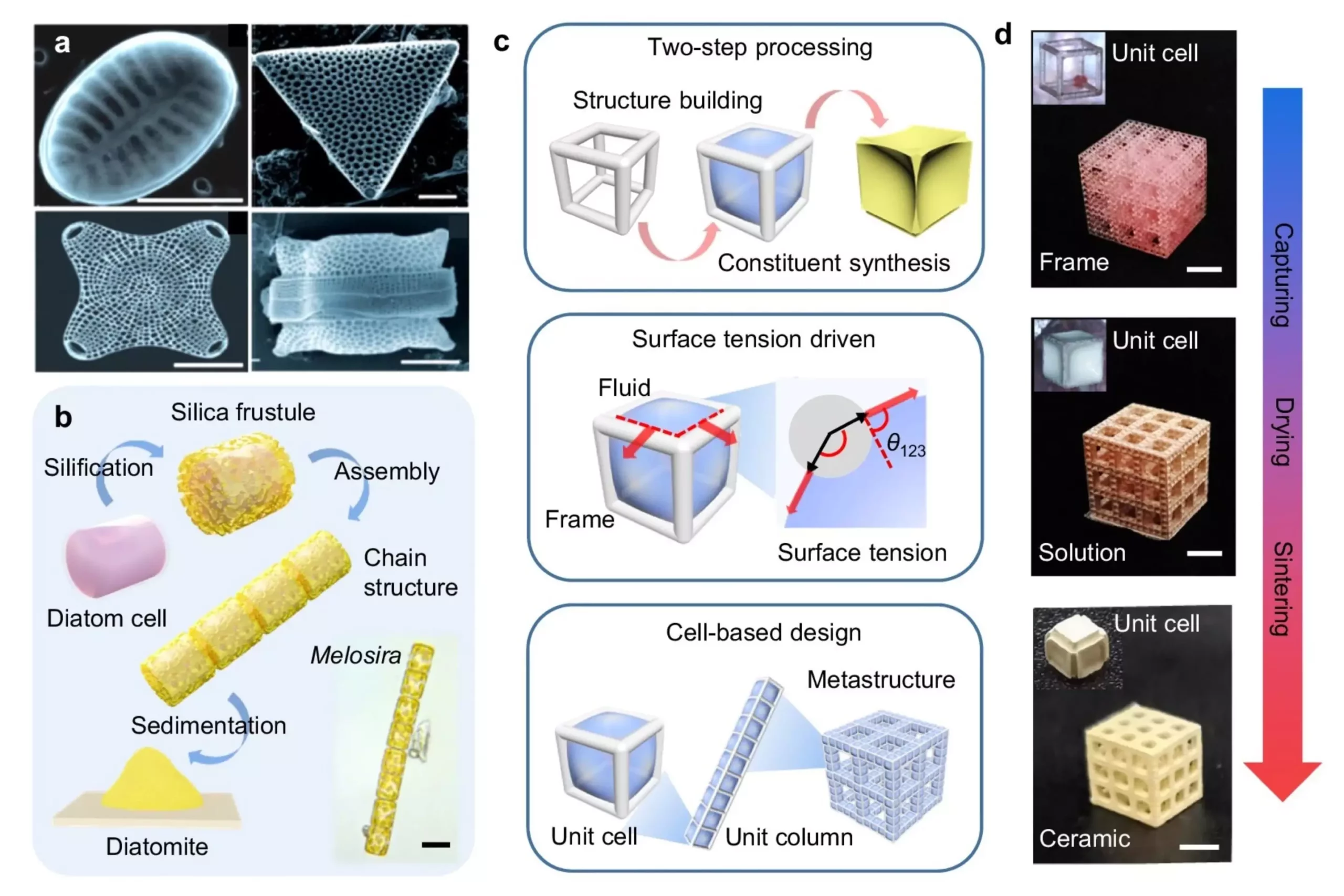Traditional additive manufacturing methods for producing cellular ceramics have always been fraught with limitations that hindered the production of geometrically complex structures. However, a recent study led by the School of Engineering at the Hong Kong University of Science and Technology (HKUST) has introduced an innovative method that promises to simplify and accelerate the production process of cellular ceramics. This groundbreaking approach has the potential to transform the design and processing of ceramic materials, unlocking a myriad of applications in energy, electronics, and biomedicine.
Associate Professor Yang Zhengbao and his research team at HKUST devised a surface-tension-assisted two-step (STATS) processing strategy to fabricate cellular ceramics with programmable 3D cell-based configurations. This method involves two crucial steps: firstly, the preparation of cell-based organic lattices with the help of additive manufacturing techniques to establish basic configurations, and secondly, filling the lattice with the necessary precursor solution.
One of the major challenges encountered during the process was controlling the liquid geometry within the lattice structures. To tackle this obstacle, the team utilized the natural phenomenon of surface tension to trap and pin fluids in the prepared lattices, thereby achieving precise control over the liquid geometry and enabling the manufacture of cellular ceramics with high accuracy.
By separating ingredient synthesis from architecture building, the STATS approach allows for the programmable manufacturing of cellular ceramics with a wide range of cell sizes, geometries, densities, meta-structures, and constituent elements. This high level of programmability makes the method suitable for both structural ceramics like Al2O3 and functional ceramics such as TiO2, BiFeO3, and BaTiO3.
The research team also investigated the geometry parameters of the architected lattices assembled by unit cells and unit columns, both theoretically and experimentally, to guide the creation of 3D fluid interfaces in arranged configurations. Following the drying and high-temperature sintering processes, the architected cellular ceramics were successfully produced, showcasing the effectiveness of the STATS approach in manufacturing complex ceramic structures.
To demonstrate the superiority of the method, researchers examined the piezoelectric performance of cellular piezoceramics created using the STATS approach. They discovered that this innovative method could reduce micropores and enhance local compactness in the sintered ceramics by minimizing the organic component in the feedstock. As a result, the manufacturing process yielded globally porous and locally compact cellular piezoceramics with a high piezoelectric constant d33 (~ 200 pC N-1) even at extremely high overall porosity levels (> 90%).
Professor Yang Zhengbao drew inspiration for the innovative method from diatoms, single-celled algae that are known for their intricate silica frustules or external cell walls. Diatoms undergo a genetically programmed biomineralization process that allows them to construct highly precise structures with diverse morphology, shape, geometry, pore distribution, and assembly. This natural phenomenon served as the foundation for the development of the STATS approach, enabling the creation of complex ceramic architectures with unprecedented precision.
The introduction of the STATS processing strategy represents a significant advancement in the field of additive manufacturing for cellular ceramics. By leveraging surface tension and drawing insights from nature, researchers at HKUST have demonstrated the potential of this novel method to revolutionize the design and production of ceramic materials for various applications in energy, electronics, and biomedicine. The programmable nature of the approach opens up new avenues for the development of advanced structural and functional cellular ceramics, paving the way for innovative technologies in filtration, sensing, actuation, robotics, energy storage, and antimicrobial devices.


Leave a Reply